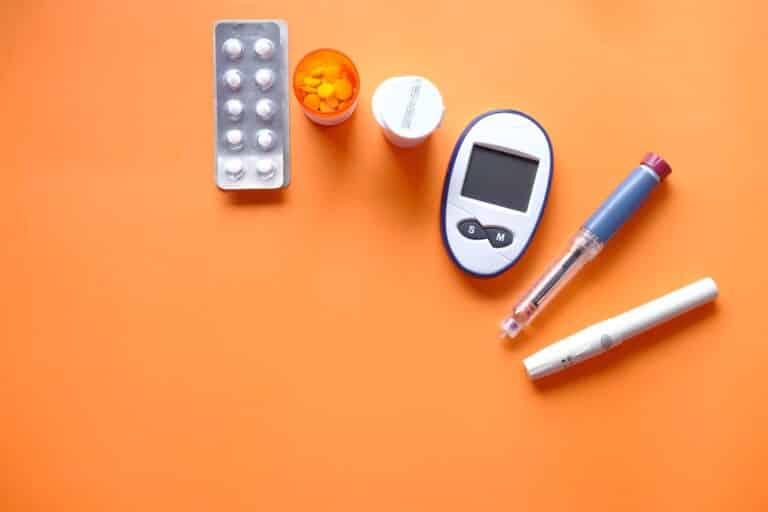What Is a Normal Insulin Level for a Woman? Essential Facts
If you’re curious about what is a normal insulin level for a woman, you’re not alone. Insulin is a key hormone that helps move sugar from your blood into your cells, fueling everything from your muscles to your brain. Understanding how your body produces and uses insulin can help you catch early warning signs of imbalances and take steps toward better health.
Understand Normal Insulin Levels
Insulin levels can vary throughout the day, so there isn’t a single universal “normal” value. According to the Cleveland Clinic (Cleveland Clinic), individual needs differ based on factors like diet, stress, and even the time of day. That being said, some sources offer reference ranges for fasting insulin. For example:
| Population | Possible Fasting Insulin Range (mIU/L) |
|---|---|
| Women (general) | 5–15 or 5–12, depending on the test |
| People without obesity | 5–7 |
| People with obesity | 13–19 |
| People with diabetes | 13–17 |
(Data adapted from Zoe and a small 2000 study.)
These numbers are guidelines, not strict rules. Your healthcare provider will likely interpret your insulin test alongside blood glucose measurements and your overall health history. If you want to see how your current levels compare, you could discuss a fasting insulin test with your doctor. For more insights, you may also explore normal insulin levels to understand how ranges vary.
Factors That Affect Insulin
- Diet: High-sugar or high-carbohydrate meals spike insulin levels.
- Physical Activity: Exercise, especially resistance training, increases insulin sensitivity and lowers insulin over time.
- Stress And Illness: Your body tends to release more hormones during stressful times, possibly increasing insulin levels.
- Time Of Day: Insulin and blood glucose naturally fluctuate as you eat and move through your day.
Recognize Key Hormonal Shifts
You might be wondering how being a woman affects insulin levels specifically. Research suggests women and men generally have similar insulin levels, but hormones like estrogen and progesterone can influence sensitivity and overall blood sugar control.
Menstrual Cycle And Menopause
During the menstrual cycle, insulin sensitivity might shift as estrogen and progesterone rise and fall. Before your period, you may notice changes in appetite or energy, which can alter insulin responses. Meanwhile, after menopause, insulin resistance often goes up, making it trickier to maintain stable blood sugar. Keep an open dialogue with your healthcare provider if these shifts feel overwhelming.
PCOS And Insulin
Polycystic ovary syndrome (PCOS) often goes hand in hand with high insulin levels. Doctors sometimes recommend weight loss or prescribe medications like Metformin for women with PCOS, as these strategies can reduce insulin levels (Medical News Today). If you’re managing PCOS, explore whether the insulin correction factor might help fine-tune your day-to-day insulin needs.
Use The Insulin Correction Factor
When your blood sugar is higher (or lower) than you’d like, a personalized insulin correction factor can guide how much additional insulin you need. You’ll often see this used with mealtime bolus insulin, sometimes called what is prandial insulin. Essentially, one unit of insulin can reduce your blood sugar by a set number of points, and you calculate your dose accordingly.
Why Correction Factors Matter
- Tailored Dosing: Everyone’s physiology is unique, and correction factors prevent guesswork.
- Better Control: By matching your insulin to your actual blood sugar reading, you can reduce spikes or crashes.
- Flexibility: If you have a fluctuating schedule or occasional meal splurges, correction factors keep your insulin in sync with real-time needs.
Maintain Balanced Insulin Levels
If you’re aiming to keep your insulin within a healthy range, a few lifestyle habits can make a huge difference. Think of these as gentle nudges rather than all-or-nothing directives.
Lifestyle Changes That Help
Exercise Regularly
- Aim for at least 150 minutes of moderate activity per week, such as brisk walks, swimming, or cycling (Medical News Today).
- Add resistance training twice a week to boost insulin sensitivity.
Choose Balanced Meals
- Opt for whole grains, lean protein, and healthy fats.
- Consider a moderately lower-carbohydrate eating plan if recommended by your doctor.
- Incorporate soluble fiber (like flaxseed) to improve insulin sensitivity (Healthline).
Manage Stress
- Activities like meditation, yoga, or even a simple nature walk can lower stress hormones, which helps keep insulin in check.
Watch Sugar Intake
- High-sugar diets are linked to insulin resistance. Swap out sugary drinks for water, unsweetened tea, or coffee.
Medication Considerations
If lifestyle changes aren’t enough, talk with your doctor about medicines that boost insulin sensitivity. Metformin is often the first choice if you have insulin resistance, and GLP-1 receptor agonists or SGLT2 inhibitors might be options as well (NCBI). In some cases, using these medications alongside an insulin index approach can help fine-tune meal choices and insulin management.
Final Thoughts
Insulin takes center stage in how your body handles sugar. So while there isn’t one perfect “normal” number, understanding your personal range can keep you informed and proactive. If you notice symptoms like high blood sugar, frequent thirst, or extreme fatigue, talk with your healthcare provider about checking insulin and glucose levels. Even small shifts like adding a morning walk or adjusting meal balance might bring your levels closer to where you want them.
Remember, your insulin story is unique. If you’re ever unsure, don’t hesitate to ask questions or seek professional guidance. By combining knowledge about your own body with supportive habits, you can create a healthier, more confident path forward.
Image Credit







Leave a Reply